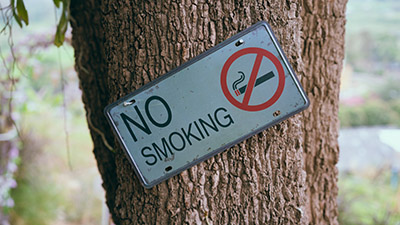Want to learn more about your Wellscreen results? Select a metric below for insight into what your numbers mean and what you can do to improve your results or keep those numbers exactly where they need to be. The information below has been reviewed by Live HealthSmart Alabama, Division of Preventive Medicine. This information is not intended to replace advice given to you by your health care provider. Make sure you discuss any questions you have with your health care provider.
-
Blood Pressure
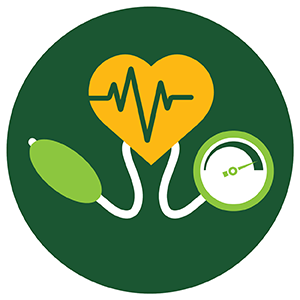
What is blood pressure?
Blood pressure is the pressure that blood pushes on the inner walls of the arteries, which carry blood from the heart to the organs and parts of the body.
- The top number is referred to as systolic pressure, which comes from pressure in the arteries when the heart contracts.
- The bottom number is referred to as diastolic pressure, which comes from pressure in the arteries during relaxation of the heart between beats.
What is high blood pressure and how can I manage it?High blood pressure is also known as hypertension. Untreated high blood pressure over time can lead to complications such as heart disease, stroke and kidney damage. Lifestyle changes that can help manage or lower high blood pressure include:
- Limiting the amount of salt in your diet
- Weight loss for those in the overweight or obese category
- Limiting alcohol use
- Quitting smoking
- Meeting physical activity guidelines (150 minutes of moderate intensity activity OR 75 minutes of vigorous intensity activity per week)
-
Total Cholesterol
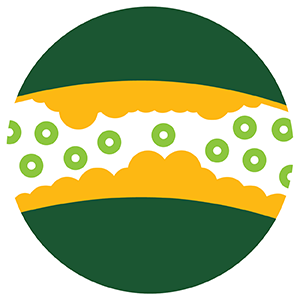
What is cholesterol?
Cholesterol is a waxy, fat-like substance that your body needs in small amounts. Your liver makes all the cholesterol that your body needs. Having high cholesterol can increase your risk for heart disease and stroke. Extra cholesterol not made by the liver can come from the food you eat, such as foods that have saturated-fats. High cholesterol can often be prevented with diet and lifestyle changes. If you already have high cholesterol it can be controlled through diet and lifestyle changes, along with medicine.
What nutrition changes can I make to control my cholesterol?- Limit your intake of saturated fat. Some foods that contain saturated fat include red meat and some dairy products.
- Limit foods with trans fats, which are found in margarine and some baked goods.
- Eat more fruits, vegetables and whole grains.
- Choose healthy sources of fats such as nuts, vegetable oils and fish.
What else can I do to lower my risk for high cholesterol?- Manage other conditions you may have, such as diabetes or high blood pressure.
- Have your cholesterol checked at regular intervals.
- Keep all follow-up visits as told by your health care provider.
- Stay physically active — try to meet the physical activity guidelines of 150 minutes of moderate intensity activity OR 75 minutes of vigorous intensity activity per week.
-
HDL vs. LDL Cholesterol
What is HDL cholesterol?
Some people call this the “good” cholesterol. This is because people with high HDL levels tend to have a lower risk of heart attacks, strokes, and other health problems.
What is LDL cholesterol?Some people call this the “bad” cholesterol. That’s because having high LDL levels raises your risk of heart attacks, strokes and other health problems.
-
Triglycerides
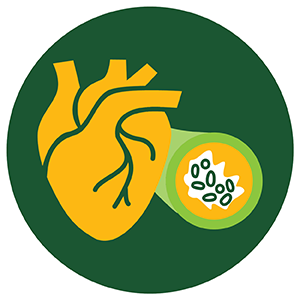
What are triglycerides?
Triglycerides are fat-like substances in the blood, separate from cholesterol. Everyone has triglycerides, but some people have too many of them. High triglyceride levels can be associated with an increased risk of cardiovascular disease.
You may be able to lower your level of triglycerides without medication, through lifestyle changes such as weight loss for those that are overweight, regular physical activity or reduction of foods high in added sugar.
-
TC/HDL Ratio
What is TC/HDL cholesterol ratio?
A total cholesterol to HDL ratio can be figured out by dividing your total cholesterol by your HDL cholesterol (HDL-C) number. Together these numbers may provide more information about your risk for coronary heart disease rather than looking at either number alone. A ratio below 3.5:1 is considered good, but it’s important to consider this ratio along with your values for total cholesterol and your HDL-C. For example, if a person has an HDL-C of 120 mg/dL, and their total cholesterol is 400mg/dL, their TC/HDL ratio would still be in-range, but would not necessarily reflect “low risk.” It is very important to review your metrics with your healthcare provider, and ask what they mean for you.
-
Glucose
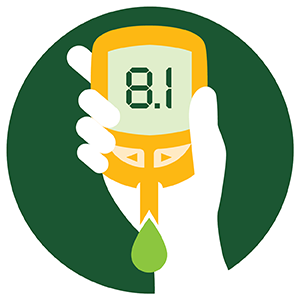
Understanding your glucose (blood sugar) level
Hyperglycemia is the technical term for high blood sugar. Insulin in the body helps manage the level of sugar found in the blood. High blood sugar happens when the body has too little insulin or when the body can’t use insulin properly. However, there are a number of things that can also cause high blood sugar such as eating more than you planned or stress from an illness. If your blood sugar level is out-of-range, it’s important to consider other factors such as your fasting status (were you fasting at the time of testing?), family history or other risk factors that may contribute to high blood sugar. Talk with your health care provider about your blood sugar levels and your risk for developing type 2 diabetes.
After Wellscreens...
Your annual Wellscreens provides a snapshot of your overall health right now, but your wellness journey never ends. Explore other UAB resources below that make it even easier to either improve your Wellscreens results, or keep those numbers exactly where they need to be through healthy eating, active living and emotional wellbeing.

